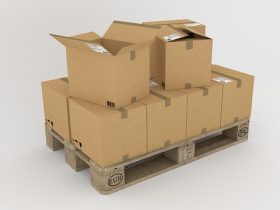In the resale market, you may experience challenges in buying or selling used goods from resale sites. These include concerns about sellers’ reputations, the costs of doing business, and the need to screen sellers on resale sites. This article provides some tips and advice for sellers and the risks and costs involved in buying used goods on online marketplaces such as Backflip. These risks are real, but they can be minimized if the business owner is prepared to be flexible and constantly revamp their image.
Problems with resale sites
While resale sites often have good buyer protection policies, many buyers have problems. For example, they constantly cannot keep track of the inventory of the items they are selling. In some cases, new items might not even be listed on the resale site, which leaves the buyer disappointed. You cannot always trust resale websites. Keeping an orderly inventory list is one of the greatest methods to keep track of what you have or what you’re selling on resale sites. It would be easy to keep track of how each item is selling. For buyers, make sure to read all buyer protection policies before buying anything.
Issues with sellers’ reputation
Used goods marketplaces can present a variety of problems for sellers. For example, they may not accurately reflect the condition and reputation of their products. For this reason, many sellers face negative reputation issues. Other sellers may also lack the necessary tools to maintain a good reputation. Responding to all reviews is a critical step in developing a good reputation management plan. There are several forums and media, or perhaps a section on the resale platform in which purchasers may voice their opinions. Sellers may not make as much money as possible due to negative reputation issues. But this is not necessarily the end of the problems for used goods marketplaces.
Displaying the condition of items
This is especially true for sites where users add photographs of their own for sale products. Users must take high-quality images from many perspectives to adequately describe the condition of used things, even those that reveal blemishes or damage. Resale sites can offer instructions for taking high-quality images with their cellphones You can, for example, demand vendors to take at least six images, with instructions on which angles to shoot. Other rules might include if the things should be photographed against a white backdrop if they should be shown on a model if the original box should be photographed, and so on.
Costs of reselling used goods
There are several ways to make money from used goods. These methods vary depending on the items and methods used to resell them. Most resale experts recommend pricing items at half their original cost, 25 percent for items a few years old, and 10 percent for everything else. Some types of things, like designer goods, have higher resale values than others. Also, if you’re selling a used piece of furniture or antique jewelry, you’ll get a higher price if it is still in good condition.
In addition to saving money, buying used goods reduces waste. It has been mass-produced when you buy something new and is often not as unique as a second-hand item. When you buy used goods, you’re preserving the item’s uniqueness, and you’re saving the planet in the process. And remember, you’re also supporting local businesses and the economy. You’re supporting mom-and-pop shops that need your business. They’re most likely investing those dollars back into their businesses.
Need for minimum screening criteria
An international standard on the cross-border trade of second-hand goods has been created, ISO 20245:2017. It specifies minimum screening criteria for second-hand goods and is a useful reference point for governments and businesses. This standard will help regulate this often unruly market and divert thousands of tonnes of waste from landfills. However, it should be noted that it is not yet applicable to all countries.







